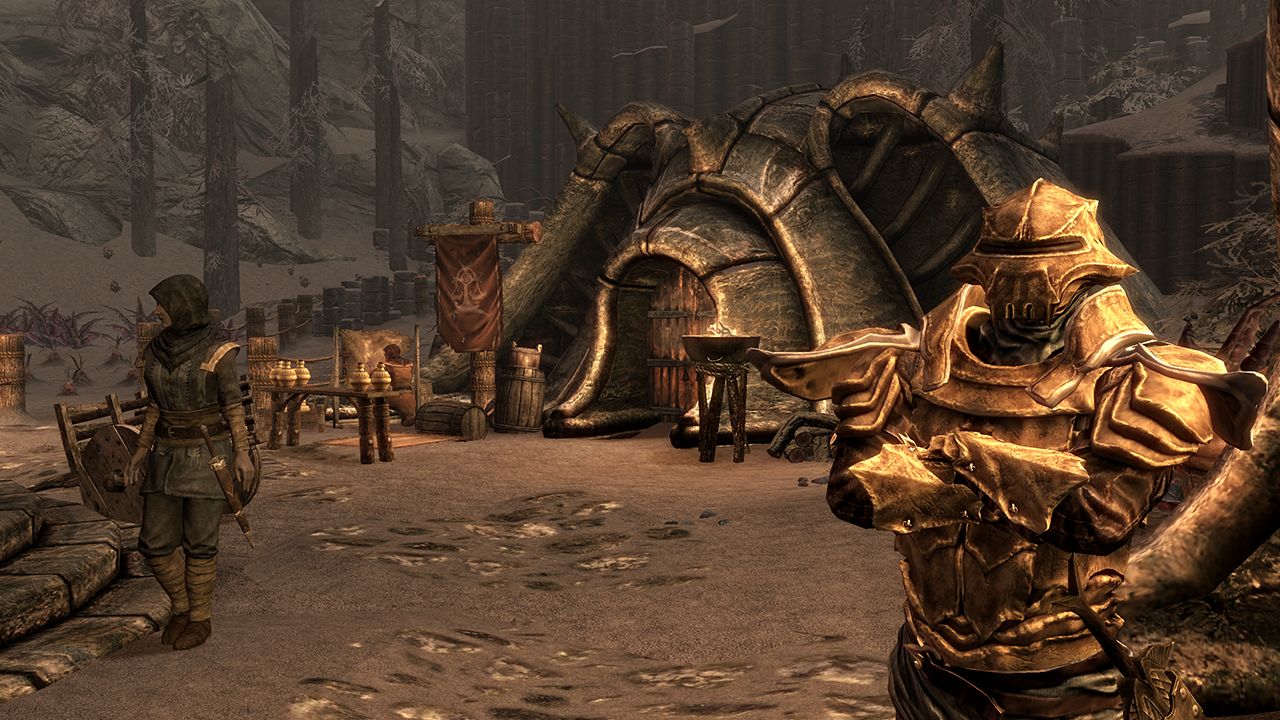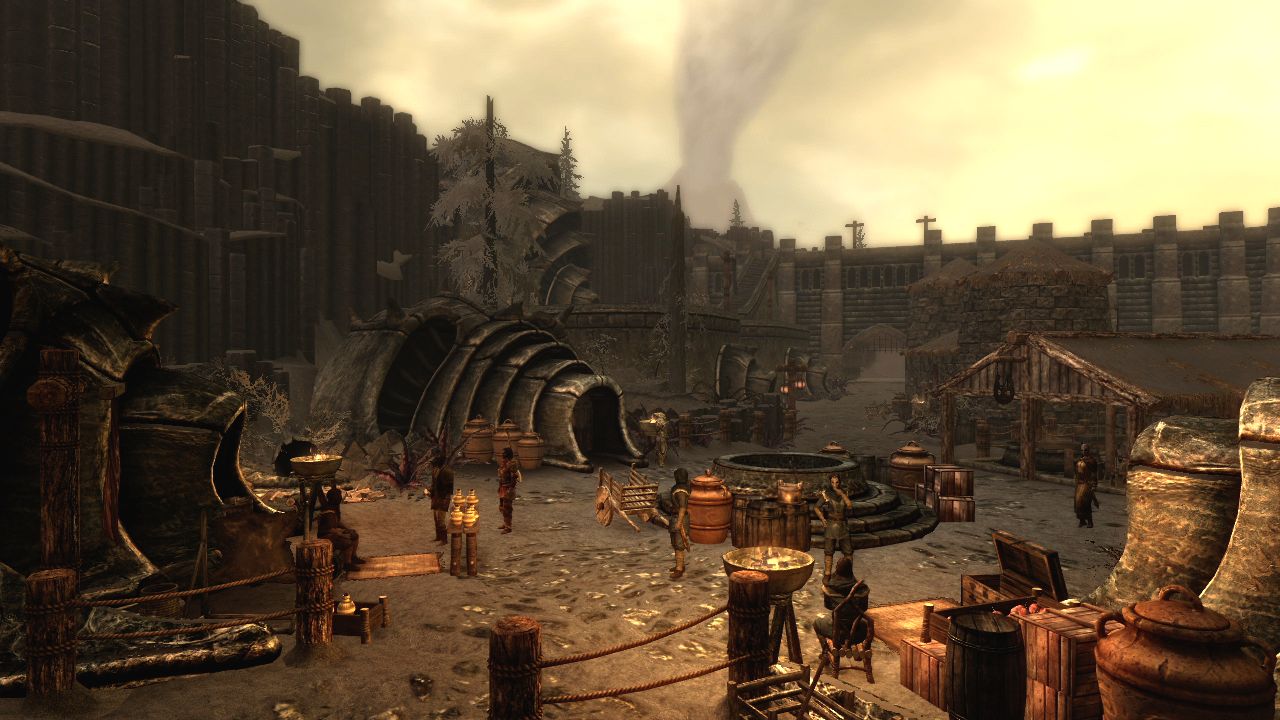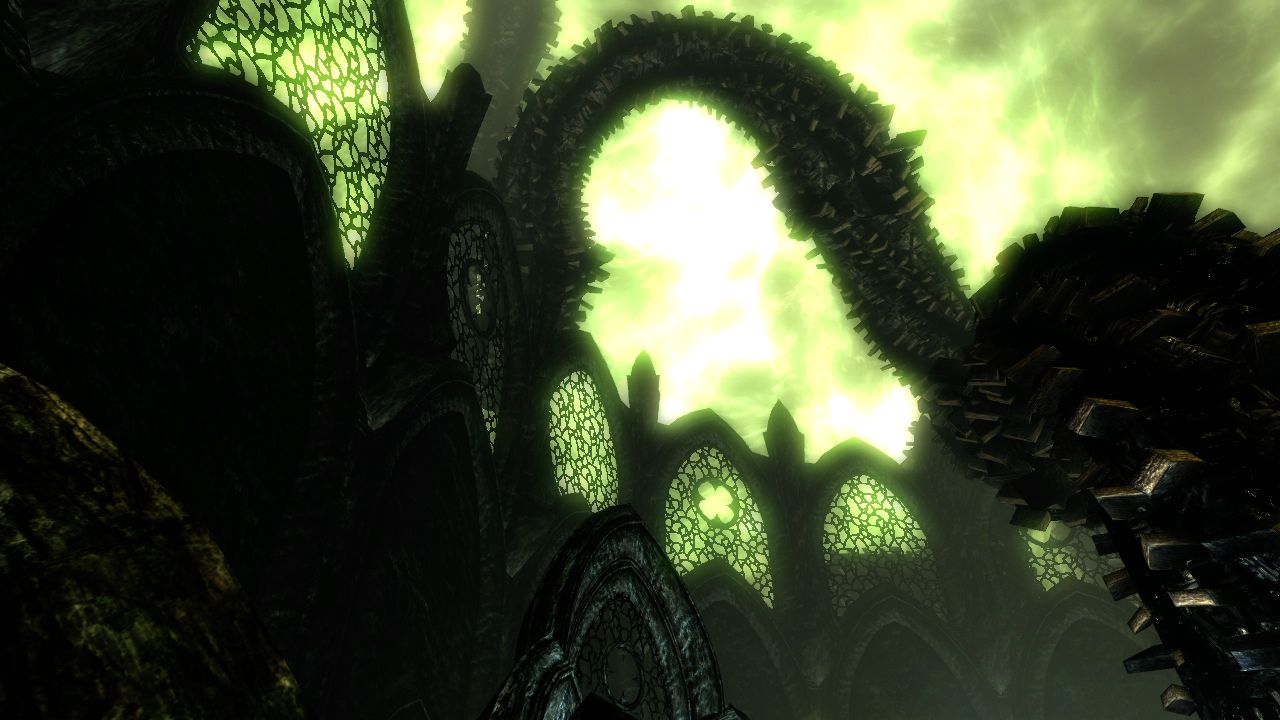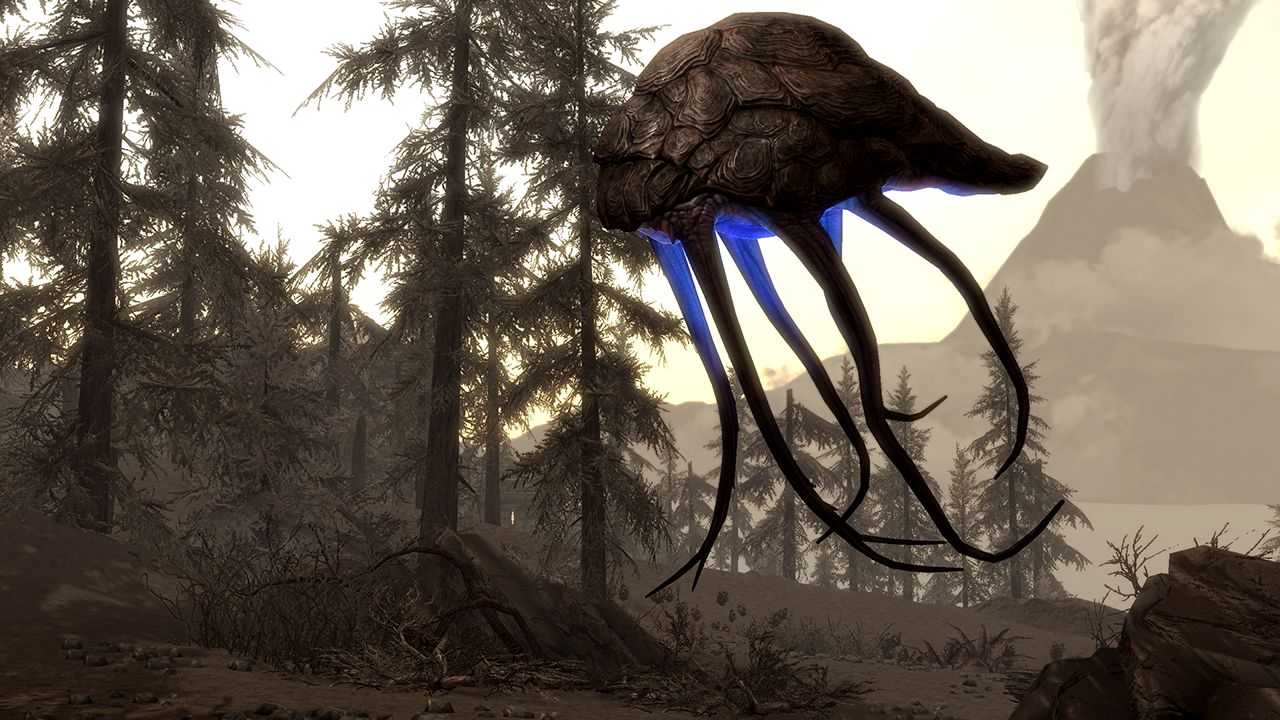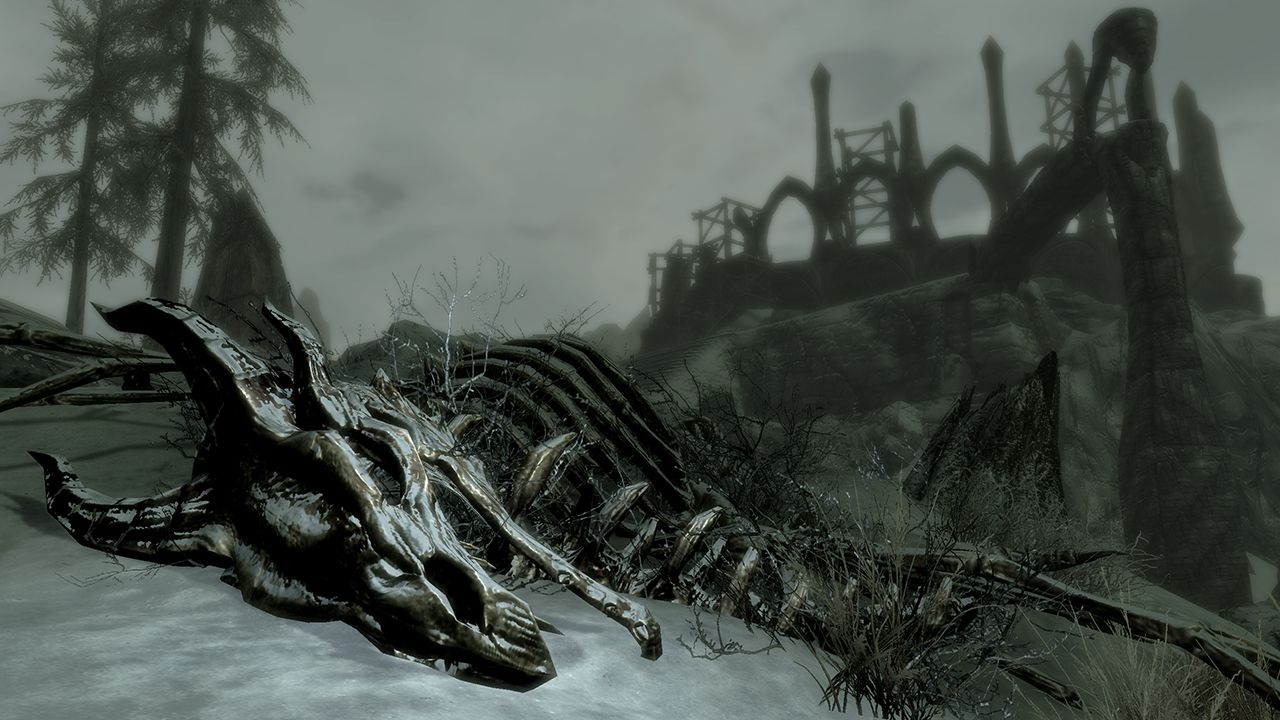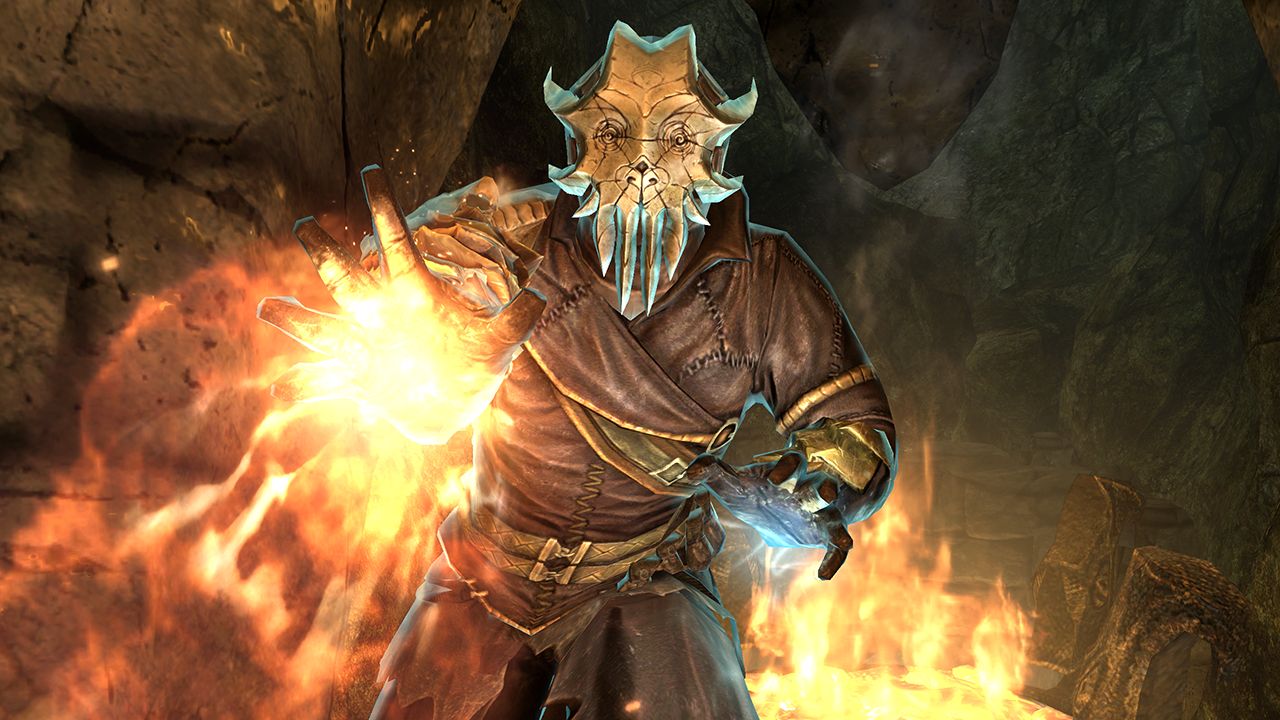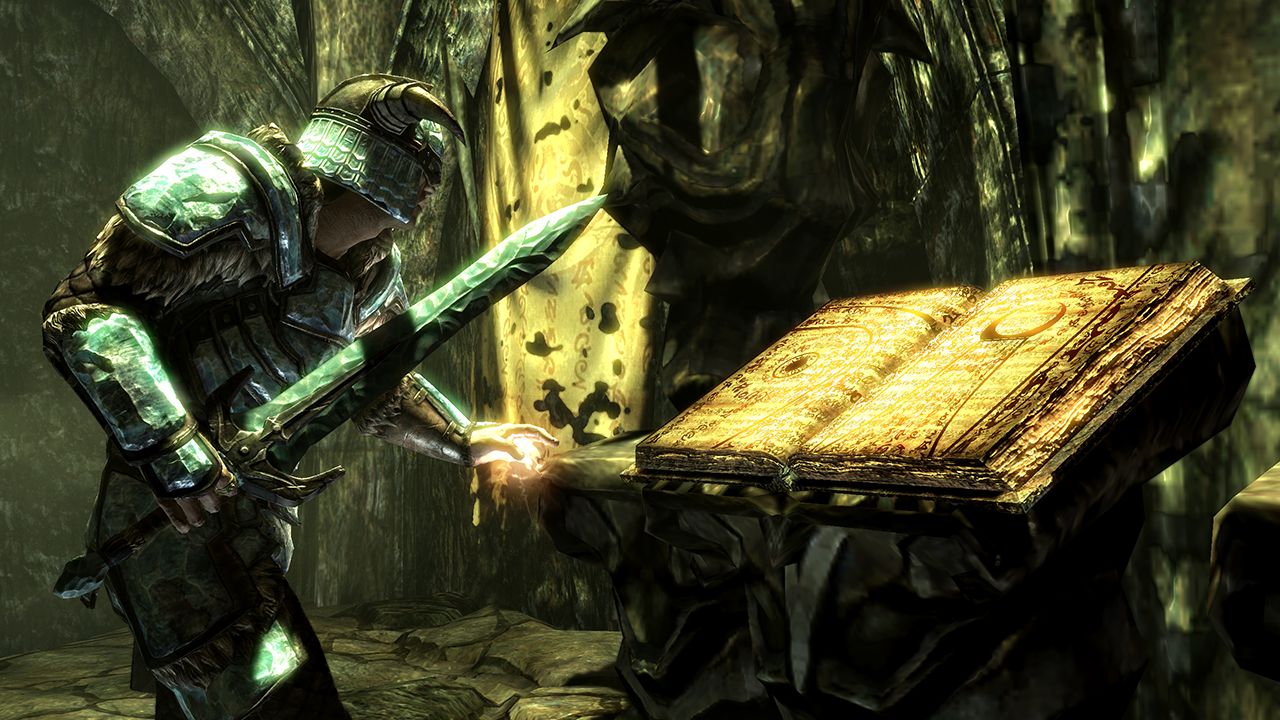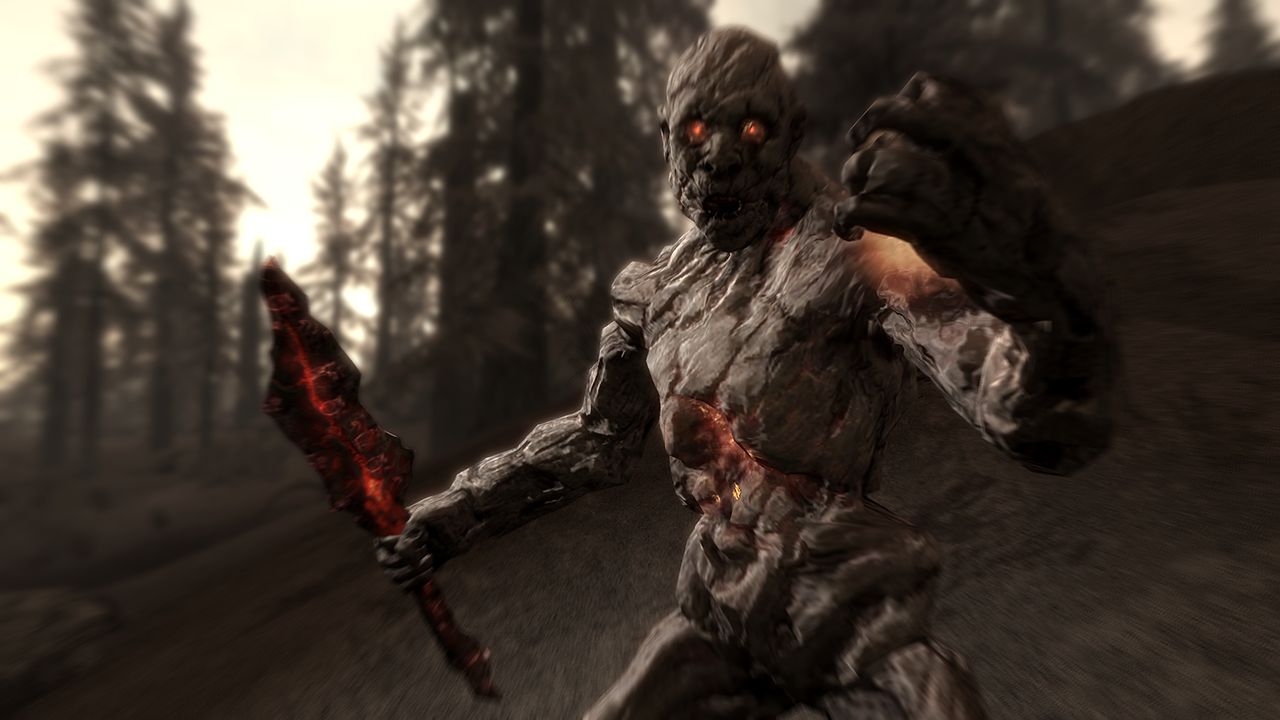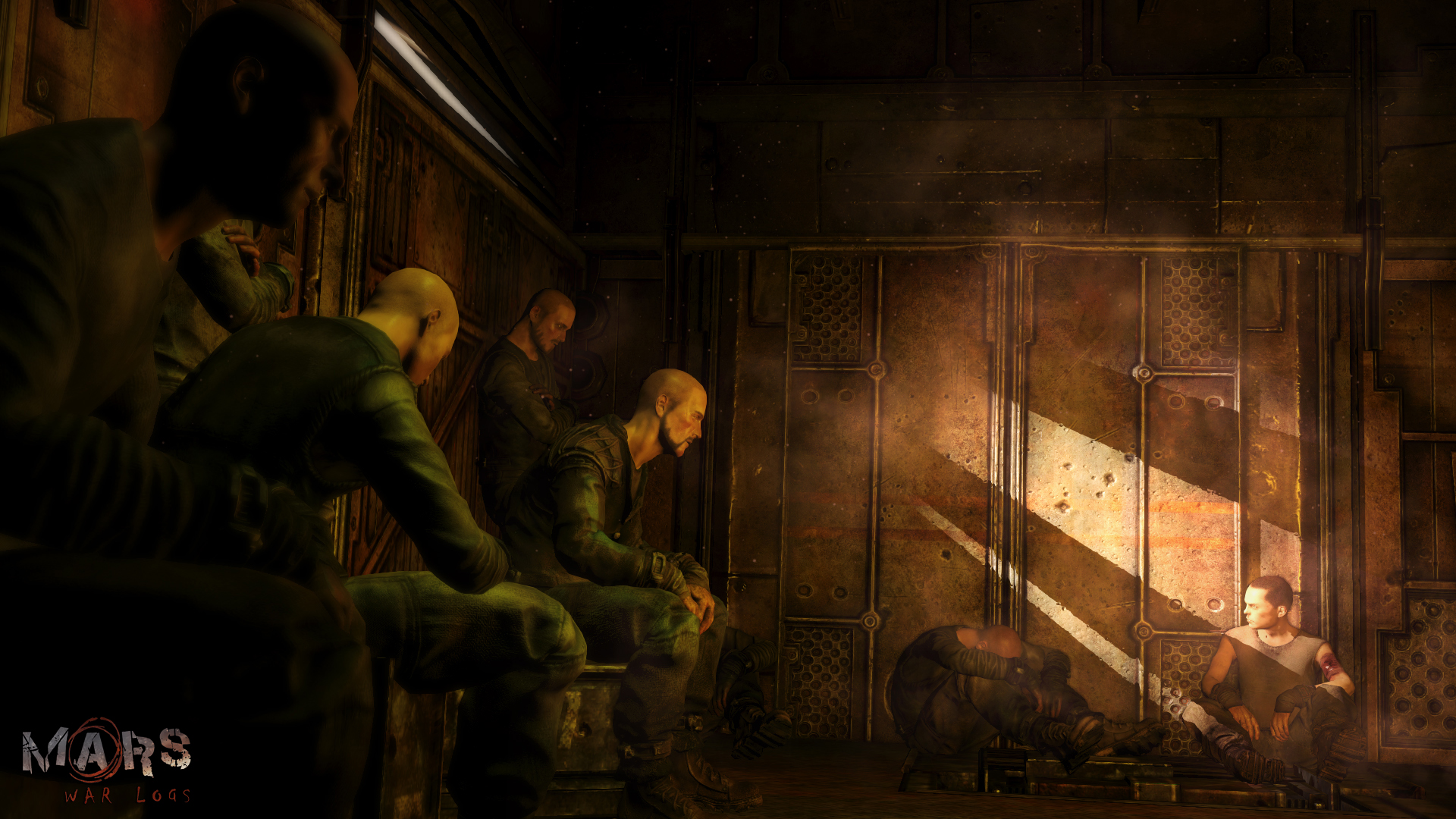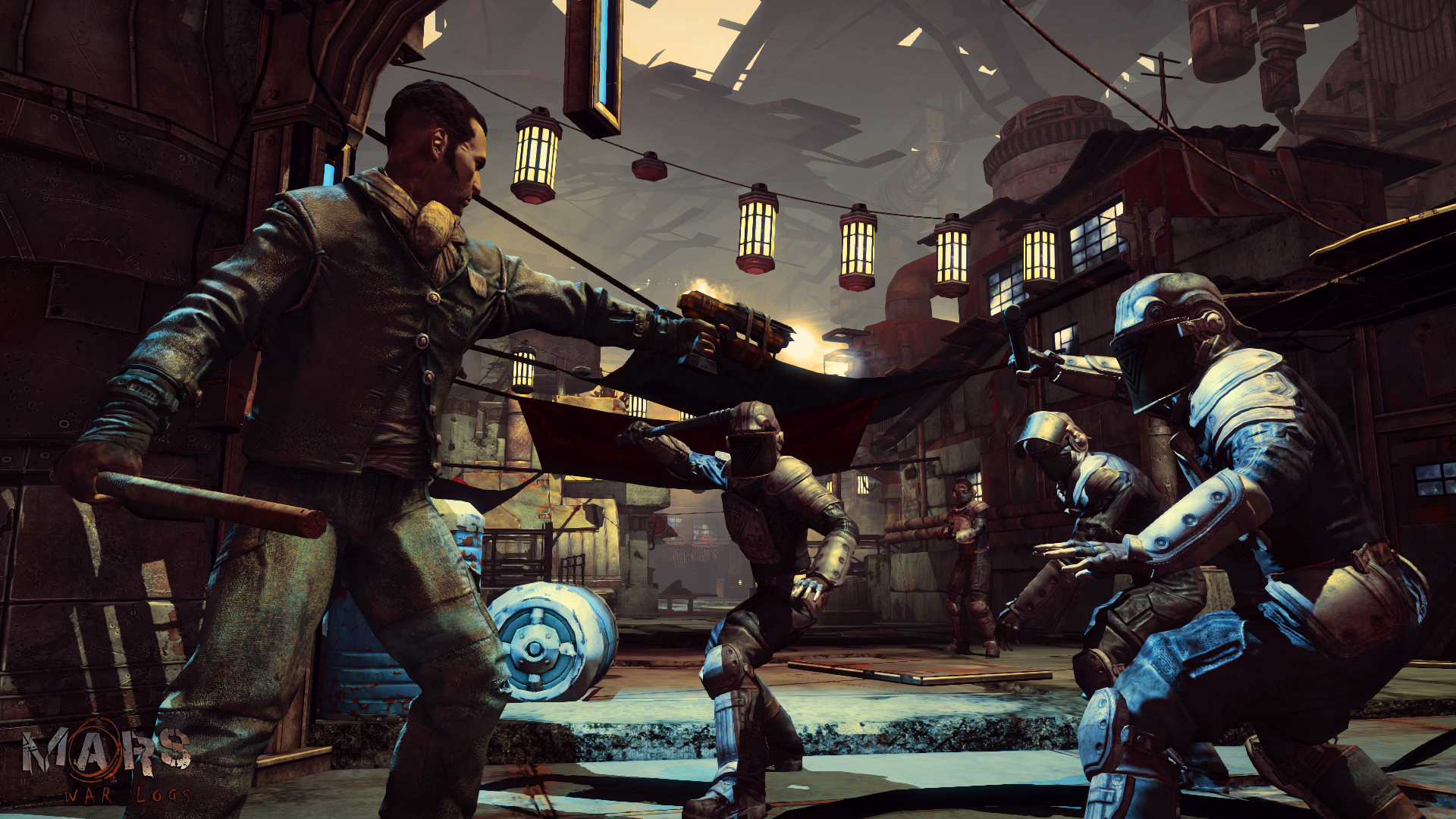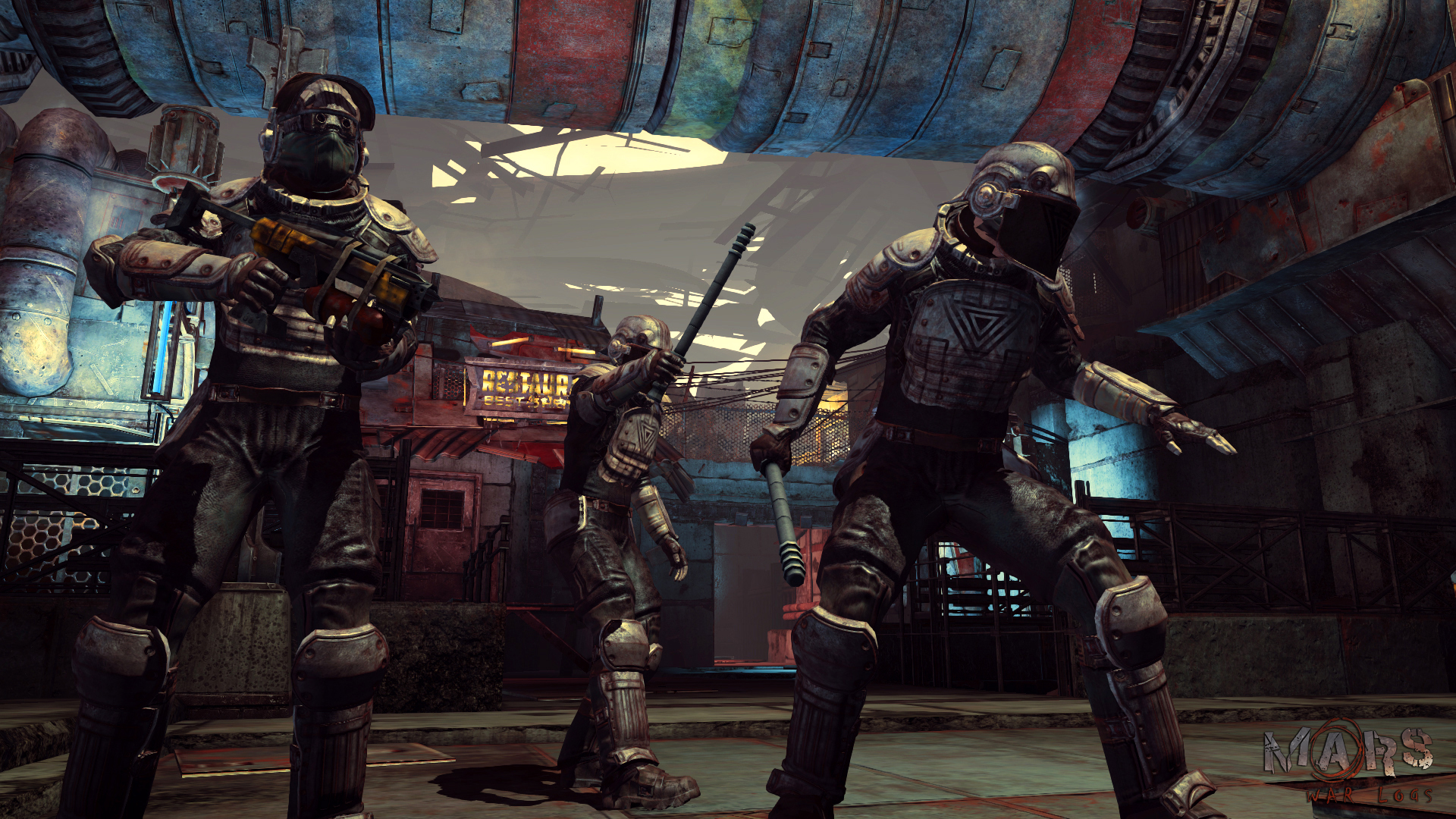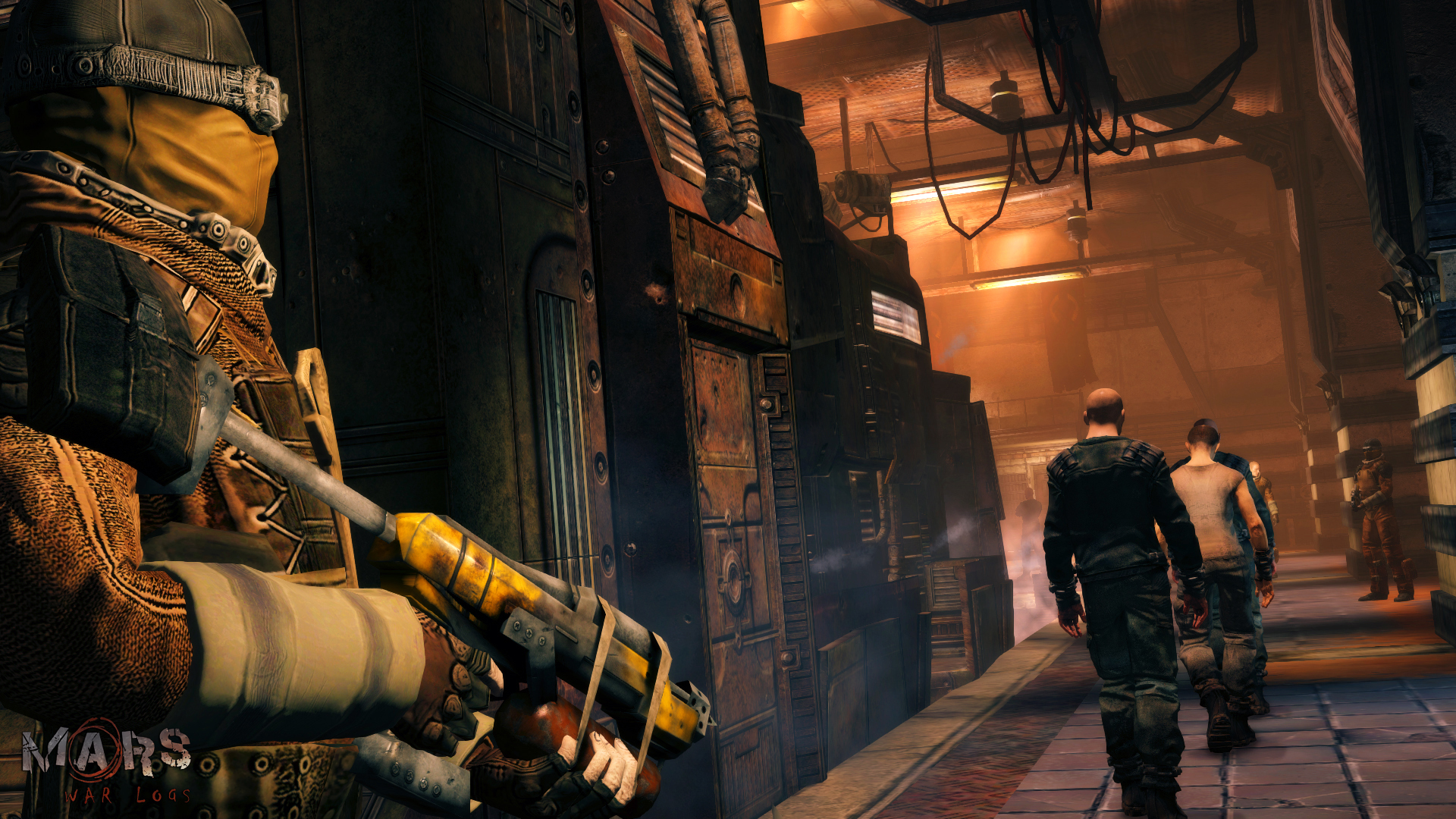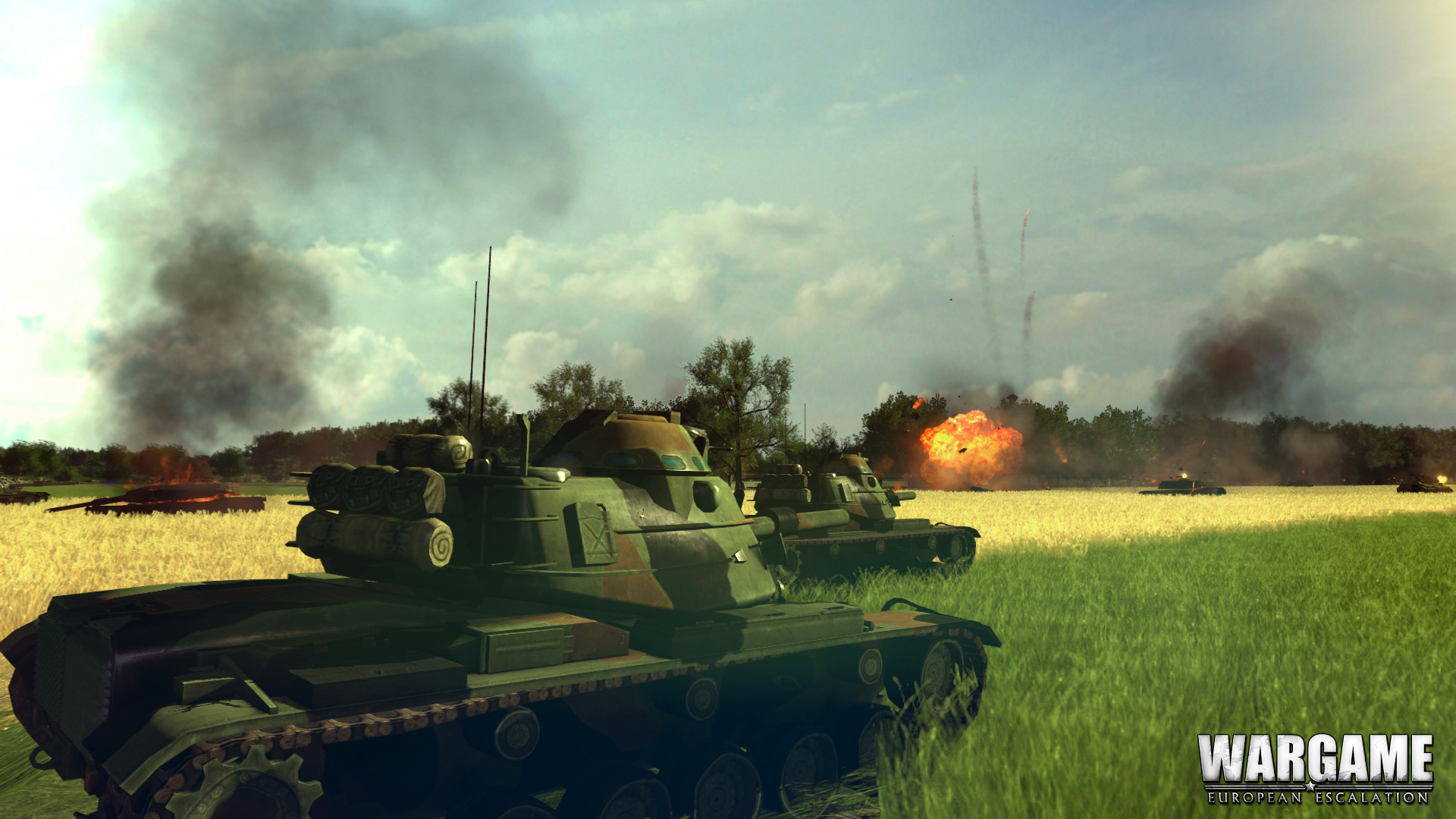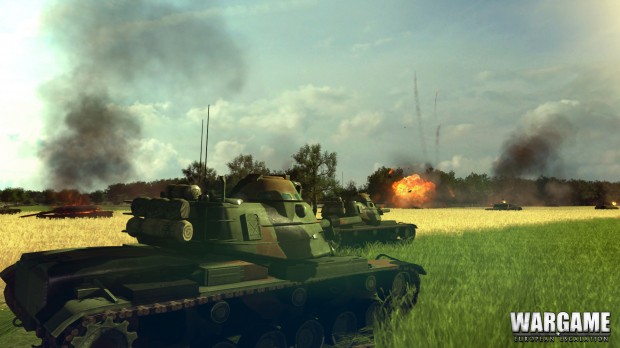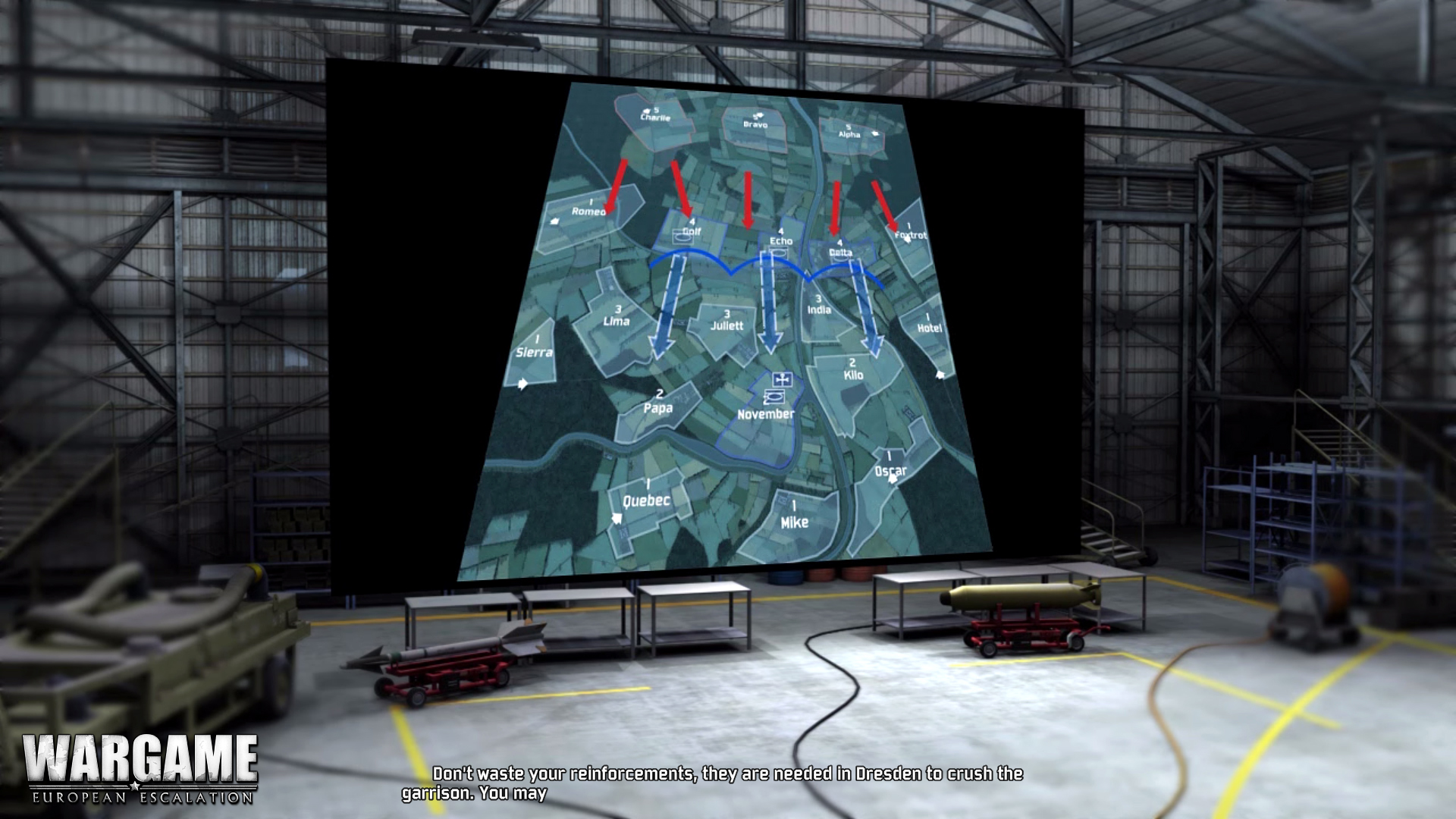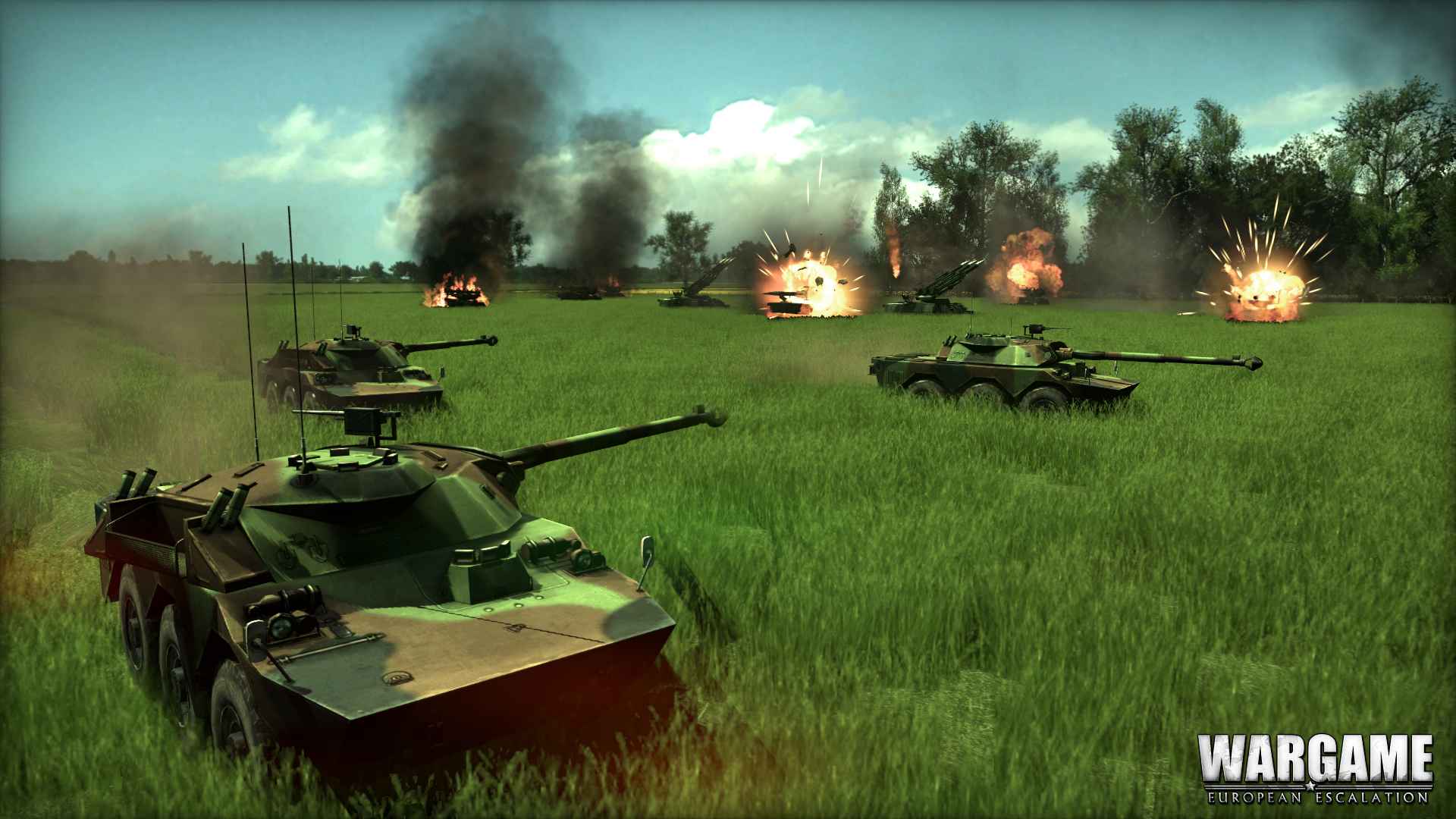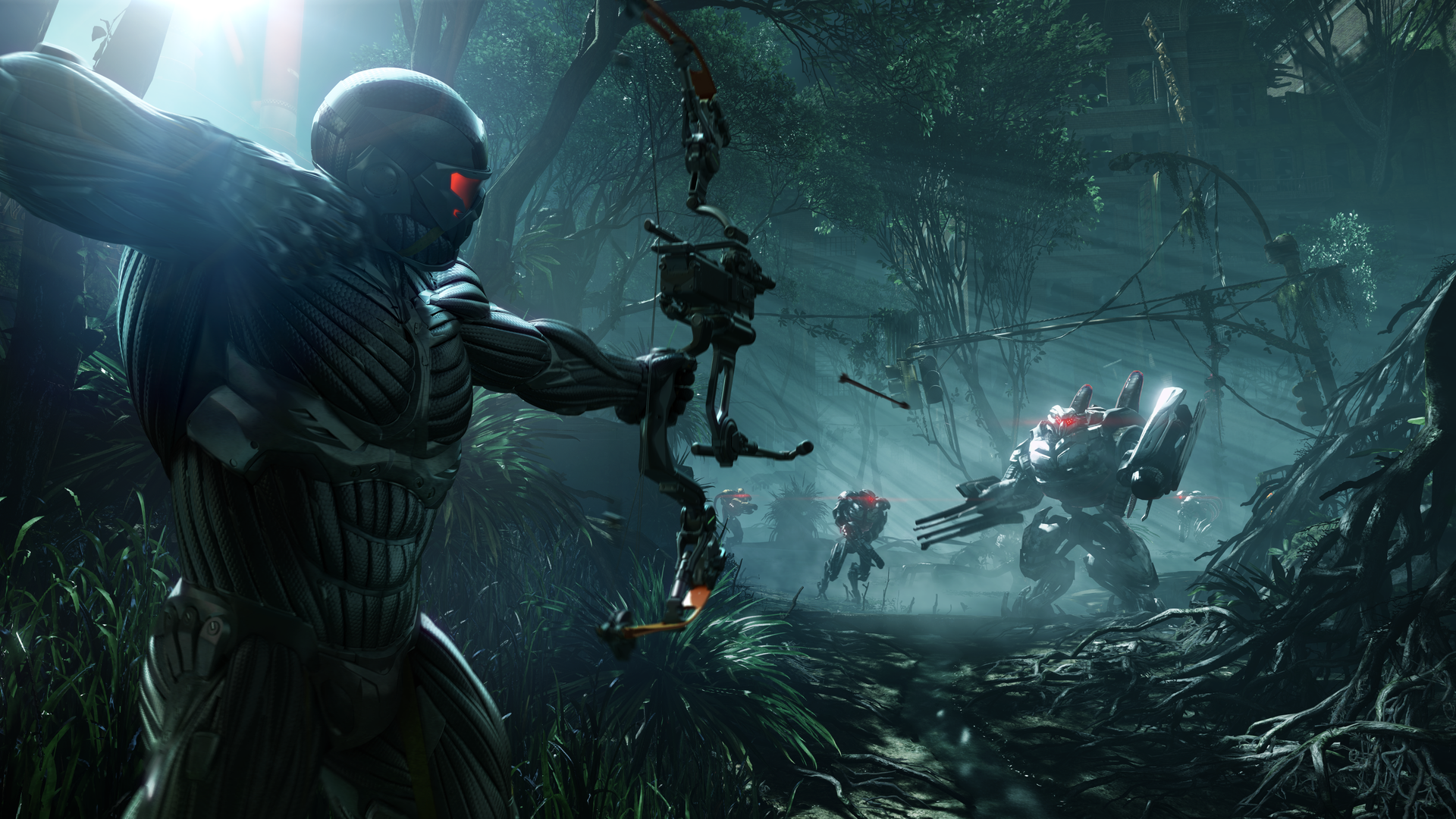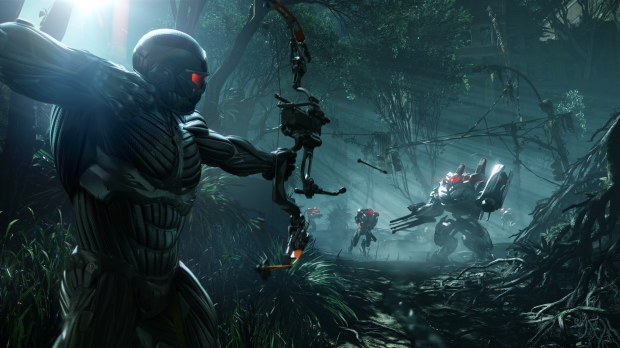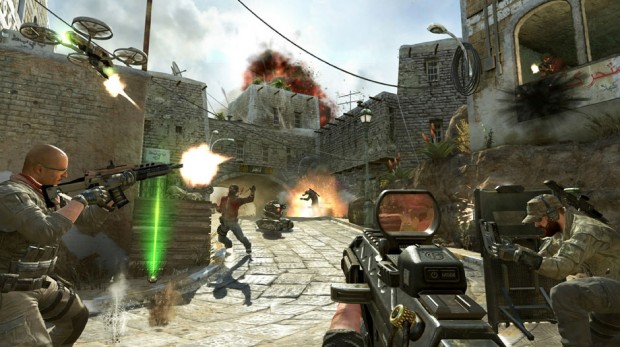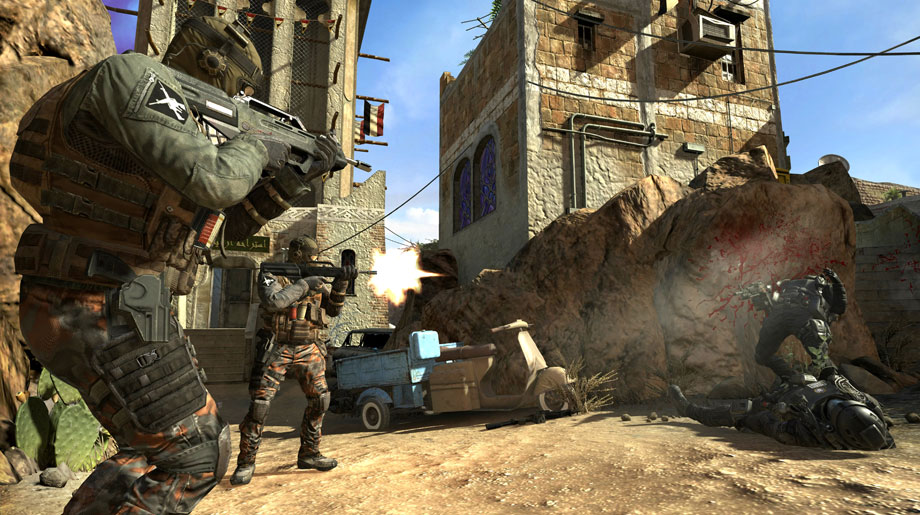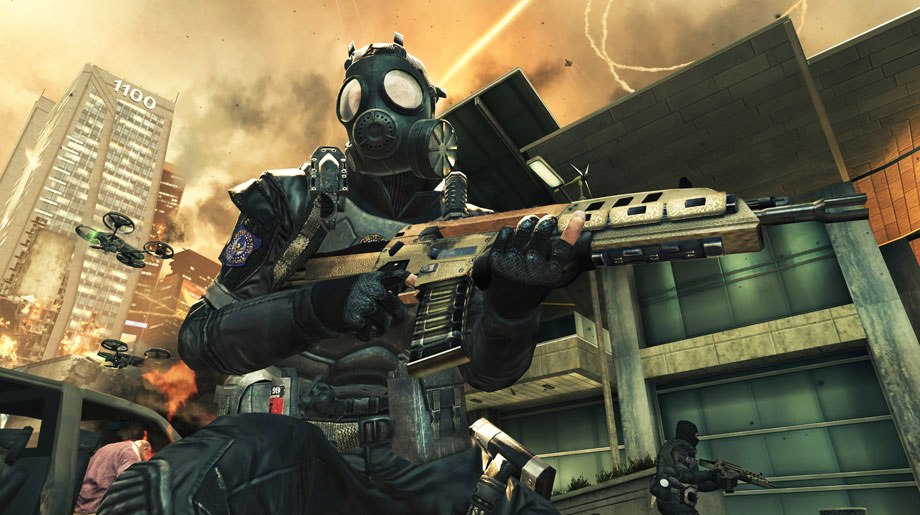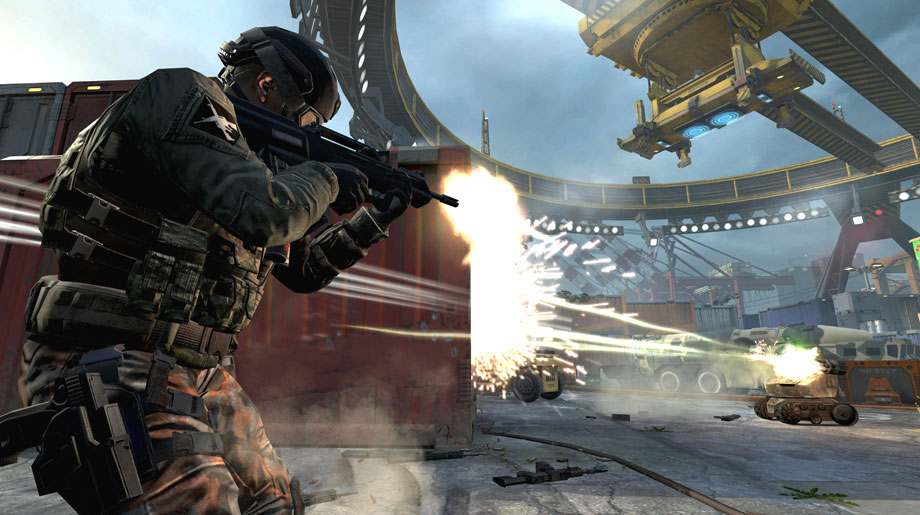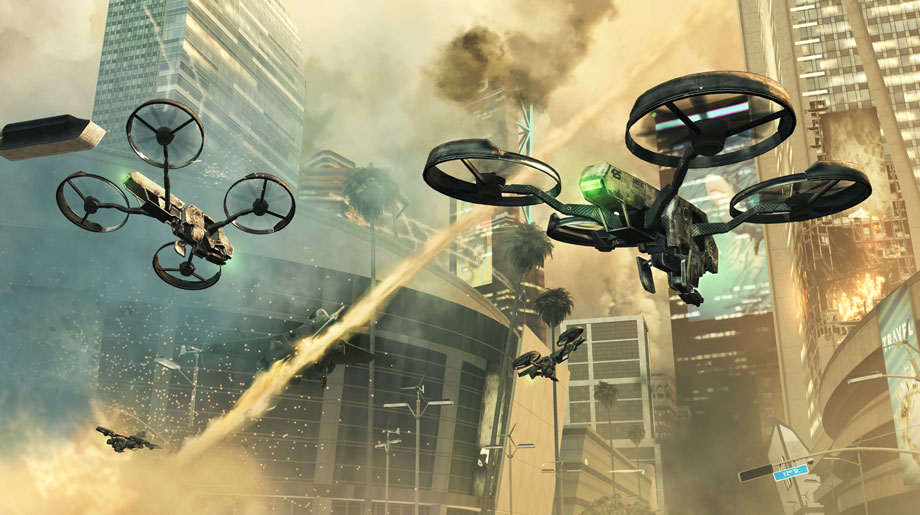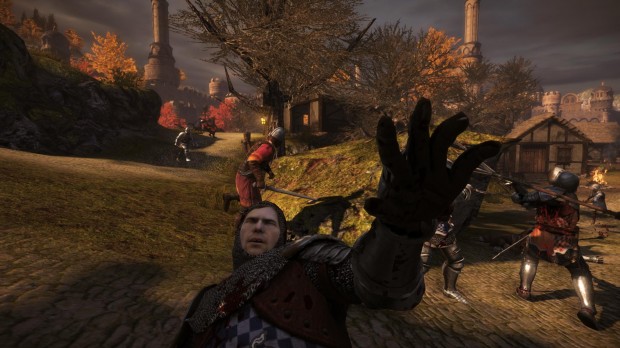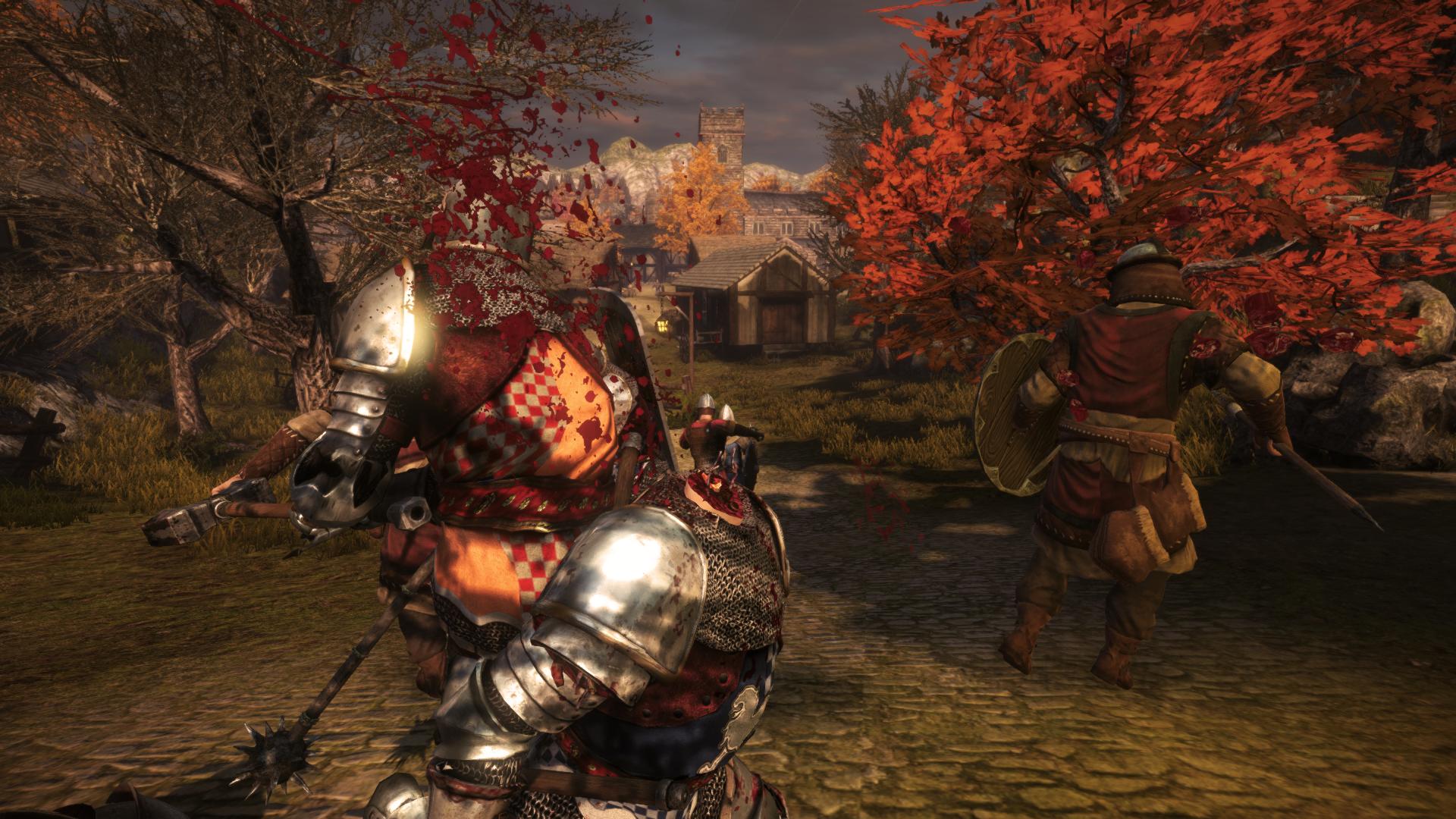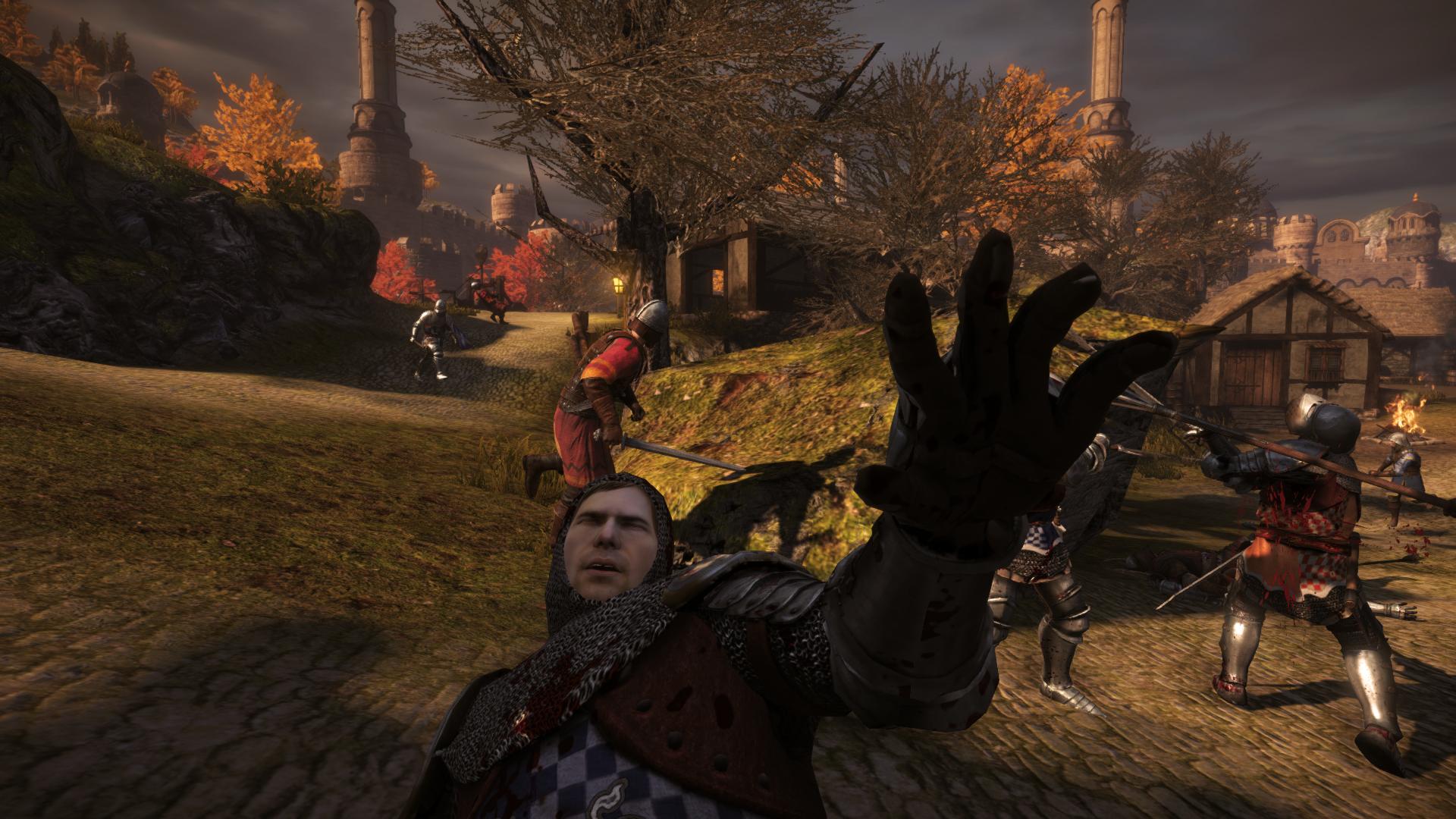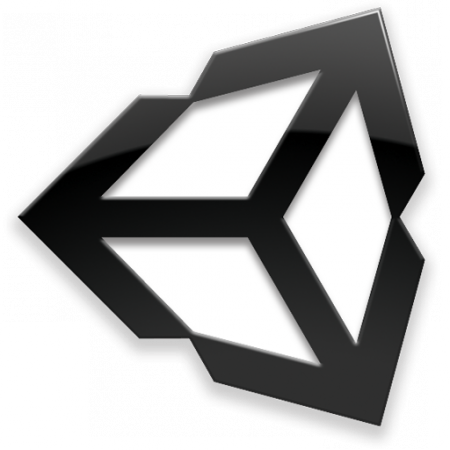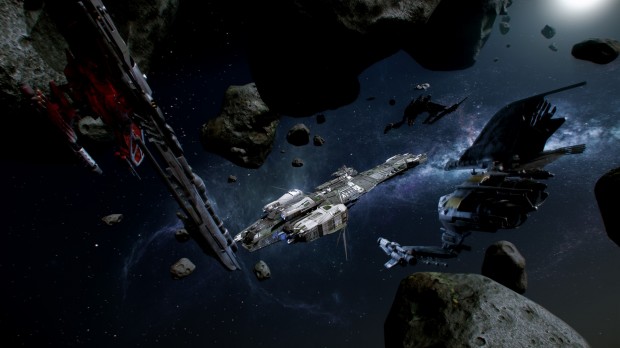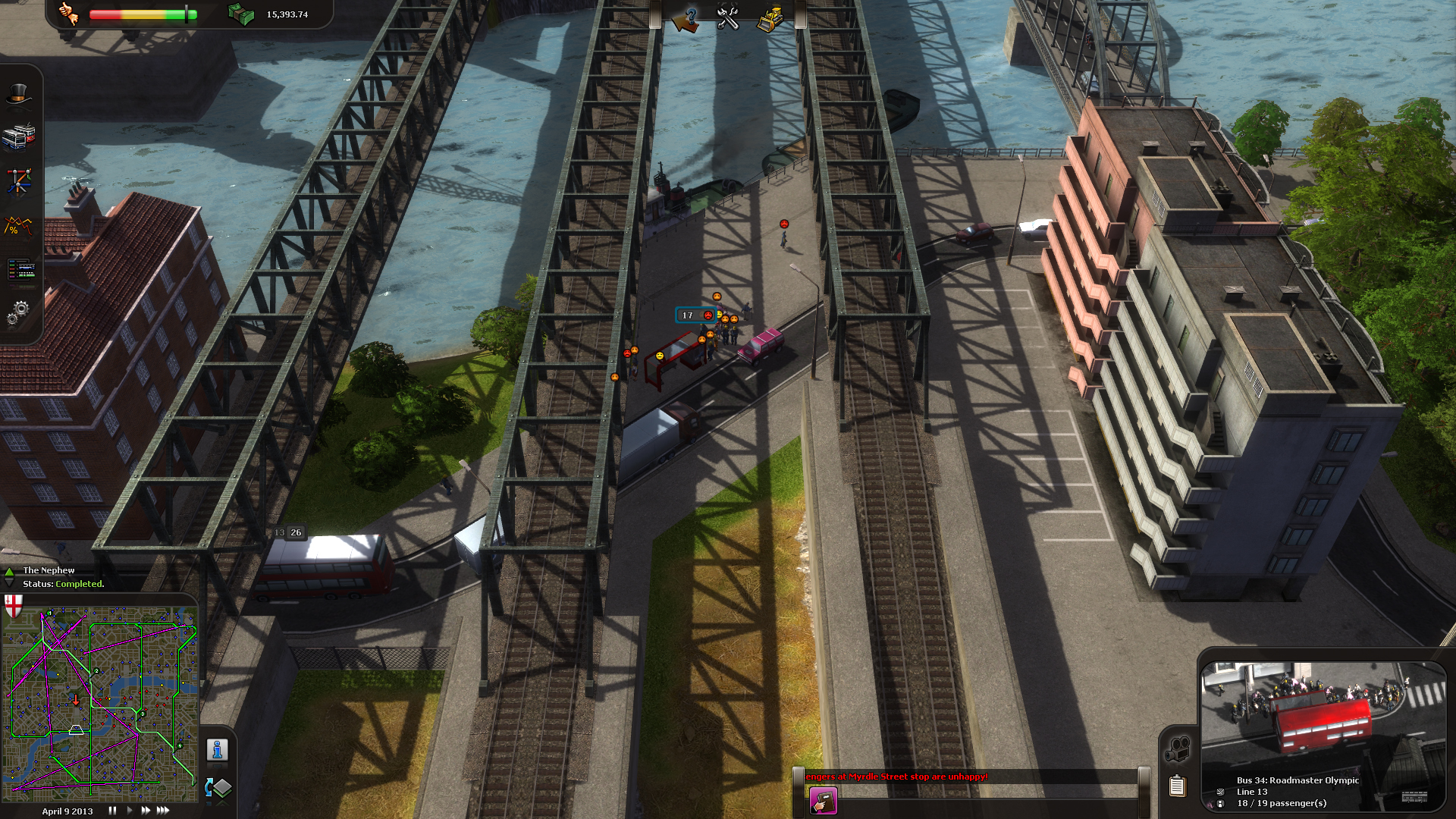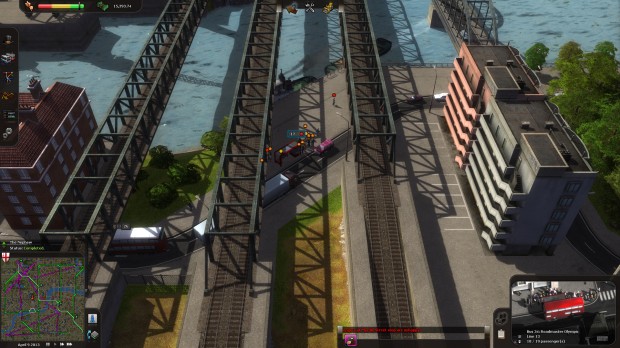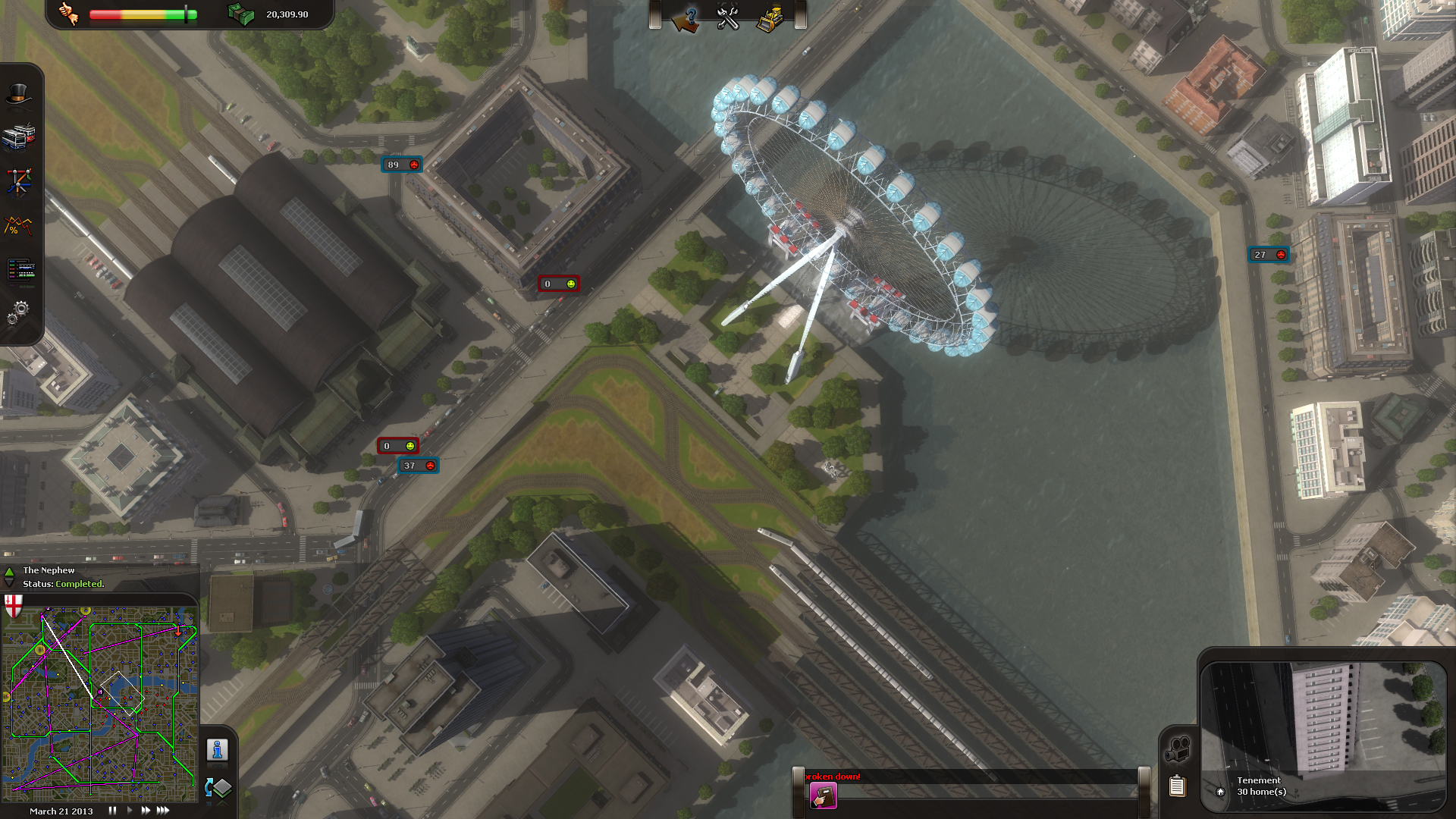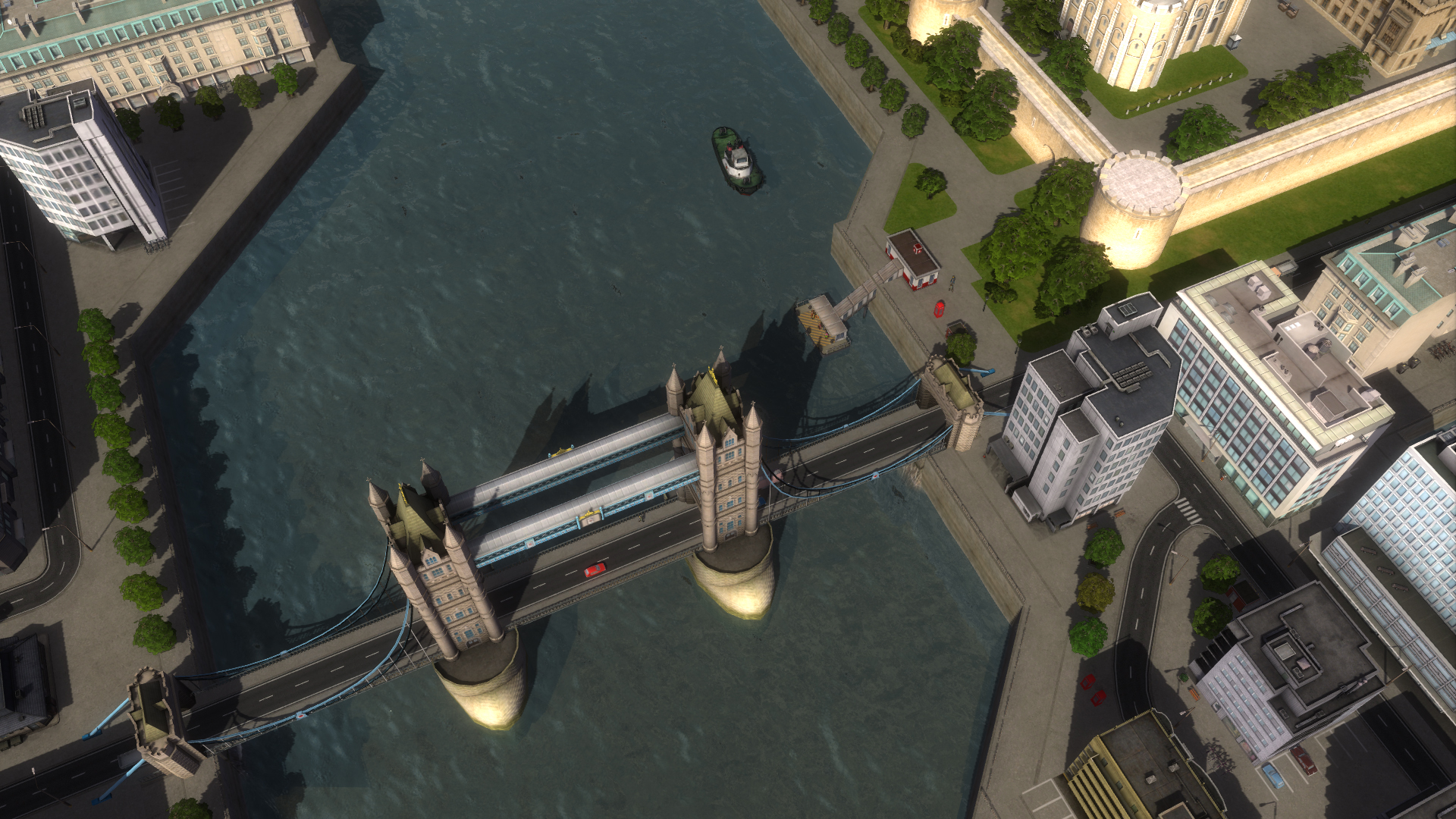Bethesda Softworks has updated their website with and released publicly the first screenshots for their recently-announced Skyrim DLC lack, Dragonborn.
Author - Jerry Paxton
I just finished up with Activision and Treyarch’s latest Call of Duty title, Call of Duty: Black Ops 2. Thanks to some innovation in the game’s design, this sequel takes the series to new heights. Unfortunately, it seems that the developers were over-reaching at times and the game is also host to several deep moments of player frustration. Despite this frustration, should you press on? Yes!
The game is broken up into three sections – the single player campaign, the multiplayer mode, and the fan-favorite “Zombies” mode. The game’s campaign is an excellent piece of plot-writing. The majority of the title takes place in our future – the year 2025. In this time period you will mostly play as David Mason, the son of the protagonist from the previous title, Alex Mason. However, as the series likes to do, you will jump backwards in time quite a bit and get to play a variety of other characters – including Alex Mason himself (still voiced by Sam Worthington). All of the characters get good moments to shine in. Your main partner in the 2025 sequences is “Harper”, voiced by Michael Rooker, and he deserves a special nod for a great performance. The best performance of the game, however, has to go to the character of Frank Woods, voice by James C. Burns, who delivers an awesome tour de force of vocal power.
The campaign features a lot of new things not seen in past games – the biggest of which is the addition of player choice. At various times during the campaign, you will have decisions to make. These decisions directly affect the storyline and can even add additional missions to the campaign. This is a big step forward for the franchise and will hopefully make the next Call of Duty title a bit more interactive – perhaps even more action-RPG like (which I am fine with). I also appreciated the fact that, in every campaign mission, I could customize my character’s weapon and equipment load-out. This customization extends into the game’s multiplayer mode, which does away with equipment-based perks, instead allowing you to “perk” your weapons via their attachments (scopes, fast-mags, etc). They have governed this with a 10-point system. Each piece of equipment or attachment is worth a point. You can use up to 10 of those per load-out. So, you can fully customize your primary weapon or go more balanced with both primary and secondary arms/attachments – the choice is yours. In terms of overall experience, the game’s campaign had me on the edge of my seat several times, feeling sorry for the main antagonist of the story (while still wanting to eliminate him with extreme prejudice), and feeling like my character played a key role in the outcome of the game’s storyline.
The game’s “Zombies” mode has also been updated with two new game types: “Tranzit” and “Grief”. Each of these adds more longevity to the game mode and give fans a lot to feast upon. Tranzit is a cool open world mode where players can navigate through all of the maps available. There are a ton of hidden secrets to uncover and it will be awesome to see how players band together into their groups of survivors to discover them. Grief is an interesting, last man standing mode where two teams attempt to kill each other not with bullets, but with zombies. The goal is to lure the zombies to the other team in order to eliminate them. This tends to go back and forth for a while and was a lot of fun to partake in.
Unfortunately, it seems that in certain instances the developers have over reached in their attempt at expanding the game’s design. The Strike Force missions, for example, are one of these instances. These are side missions unlocked by playing through the campaign and performing various objectives. They don’t feature any central characters but, instead, feature a squad of units (of various types) for the player to control. The problem is that this mode is trying to be part-FPS, part-RTS, and part multiplayer mode (in terms of how its goals are laid out) and doesn’t do any one of them particularly well. The RTS element of controlling your units by clicking locations for them to go is clunky and the AI is not all that great – so you can’t ever truly depend on them to handle taking on the enemy. This means you have to jump into the shoes (or robotic feet) of those units and manually control them. This, however, leads to a loss of situational awareness and overall unit control as you get sucked into the shooter game. The Strike Force game mode simply did not feel like it should have been included into the game’s campaign. I would have instead liked to have seen them be a co-op game type as that would be a lot more efficient way to play them.
If you have played EA’s Medal of Honor Warfighter, you have no doubt experienced the very on-rails sequences of that game where you really did not have to do anything to complete them. The game almost ran itself in those cases. Well, the on-rails sequences of Black Ops 2 are not usually that rigid, thankfully. Unfortunately, these sequences are sometimes not rigid enough in terms of pushing the player to do something and then punishing them for a bit of free-thinking. For example: Just because my character took cover behind a different column than the guy I am following (even though it was only a few meters away), I was taken out by an enemy drone. Thing is, the drone never got me in its spotlight or even fired a shot – it was simply a logic issue. I wasn’t exactly on the pinpoint spot where I needed to be – so the game assumed I died and killed me accordingly (when my column was just as good). It is clumsy things like that the create a lot of frustration for players. It is most frustrating when you experience these moments in the midst of the sometimes-brilliant moments that Black Ops 2 offers. The contrast between the brilliance and the frustration is palpable. How can the game be so much fun and so slick and then suddenly be clumsy and frustrating?!?
Visually, Call of Duty: Black Ops 2 is very impressive, with some great environments to roam through either in the campaign or multiplayer/zombies modes. The Los Angeles level of the campaign is my personal favorite – despite a somewhat clumsy flight sequence.
Overall, Call of Duty: Black Ops 2 is a very fun shooter with a gripping campaign and fun multiplayer components. It’s almost like getting three games for the price of one. Just try to enjoy its many excellent qualities and not get too frustrated with its qualities less-than-so.
[easyreview title=”Call of Duty: Black Ops 2 Review Score” cat1title=”Overall Score (out of 5)” cat1detail=”” cat1rating=”4″] Our Rating Scores Explained
[wpcol_1half id=”” class=”” style=””]
Pros
- Intriguing campaign with interesting characters
- Player decisions and success affects storyline
- New “Zombies” multiplayer modes
- Great new load-out customization system
[/wpcol_1half] [wpcol_1half_end id=”” class=”” style=””]
Cons
- The game is, at times, very frustrating due to some clunky gameplay mechanics
- The AI sometimes just doesn’t respond in Strike Force missions
[/wpcol_1half_end]
Screenshots
Torn Banner Studios has released their online medieval combat game, Chivalry: Medieval Warfare. Players can join one of two factions in each game, the Masonic Order or the Knights of Agatha. Neither is very important, nor is the game’s over-arching storyline. The important focus of the game is that of the combat itself. Players can choose between four classes (Archer, Vanguard, Knight, and Man-at-Arms) – each with their own bonuses and styles. The Knight, for example, is the slow yet heavy hitter of the group while the Man-at-Arms is a light and nimble melee fighter. The classes all have things they excel at and work together nicely. None seemed overpowered and all give players a fighting chance when used correctly.
The combat mechanics end are successful at being fast and furious as well as somewhat complicated. For example, there are three basic attacks which can be executed by clicking the left mouse button, scrolling the mouse wheel up, or scrolling the mouse wheel down. The controls are not exactly what I would consider to be intuitive. This leads to a bit of a learning curve as the gamer tries to grasp how to use the controls in the heat of battle. One cool feature of combat is the ability to feint an attack by hitting the Q button in mid-swing of your weapon. The idea here being that the enemy will try blocking your attack early, leaving themselves open to your follow-up, “real” attack.
Multiplayer games start smoothly and the player gets to select which faction and class they wish to play before hitting the battlefield. Maps are interesting, with a variety of landscapes to fight on. There is also in-game voice chat which works well. Communication is key in this title as players are not arcade-style FPS characters that can absorb a ton of hits before dying. As the interest with Chivalry: Medieval Warfare is to marry the fast and the “sim”, it is very easy to die… So, watch your various team members’ backs.
Visually, the game is pleasing to the eye and does a fine job while not being state-of-the-art in terms of graphics technology. The game’s sound design is well executed with tons of medieval weapon audio effects.
Overall, Chivalry: Medieval Warfare is a very satisfying game of medieval combat that is a real blast to play once you get over the learning curve. If you are in the mood for something different, I definitely recommend checking it out. Just don’t get frustrated with it early on – be patient and stick with it.
[wpcol_1half id=”” class=”” style=””]
Pros
- Fun combat mechanics
- Well-done class separation of abilities
- Inexpensive game with lots of value for its price point
[/wpcol_1half] [wpcol_1half_end id=”” class=”” style=””]
Cons
- A learning curve to overcome
[/wpcol_1half_end]
Screenshots
San Francisco – November 14, 2012 – Unity Technologies, provider of the Unity multi-platform engine and development tools, is proud to announce Unity 4.0 is now available for download. Unity 4, announced in June, will consist of a series of updates designed to improve the product through an extensive improvement of existing tech and the rollout of new features.
The first in a series of updates for Unity 4, this version includes significant additions such as DirectX 11 support and Mecanim animation tools. In addition users will have access to a Linux deployment preview and the Adobe® Flash® Player deployment add-on.
“Unity 4 will see the addition of an incredible number of new, highly advanced, features and continuous improvement across the tech to be released in smaller, faster increments than Unity has seen in the past,” said David Helgason, CEO, Unity Technologies. “It’s an exciting time for Unity and the 4.0 release marks the beginning of a great new era for our technology.”
Mecanim – Stunning Character Animation
Mecanim, Unity’s powerful and innovative animation technology, is setting new industry standards for tools in integrated development environments allowing the creation of complex state machines, blend trees, IK rigging, and auto retarget animations to characters of different sizes and shapes, all inside of the Unity editor. Developers will find a sizeable selection of retargetable animations available in the Unity Asset Store: http://unity3d.com/unity/asset-store/.
DirectX 11
With the ability to take advantage of full DirectX 11 support, including shader model 5, tessellation for smoother models and environments in game worlds, and compute shaders for advanced GPU computation, Unity 4.0 empowers developers. DirectX 11 support development was aided by development of the Butterfly Effect demo: http://unity3d.com/promo/butterfly/.
High-end Visual Capabilities for All Platforms
Unity 4.0 also features real-time shadows on mobile, skinned mesh instancing, the ability to use normal maps when baking lightmaps, and a refined GPU profiler. It’s easy to make extremely high-end visuals that scale across the best of what’s available on modern PCs and the most advanced mobile graphics chips.
Adobe Flash Player Add-on
The Adobe Flash Player deployment add-on will empower developers to publish their new and existing titles to one of the world’s most ubiquitous gaming platforms on the web. With the wealth of incredible features in the 4.0 release, Unity is the most powerful development pipeline for creating high quality 2D and 3D content for Adobe Flash Player. The add-on is now available for sale in the Unity store: https://store.unity3d.com/.
Linux Publishing Preview
Unity 4.0 will also include a preview of a new deployment option to publish games to Desktop Linux, clearing a path for the Unity community to bring exciting new content to the PC market’s most voracious indie gamers. Desktop Linux standalone publishing will be available for all Unity 4 users at no additional cost.
Unity 4 introduces many additional features and improvements, including:
- Shuriken particle system supports external forces, bent normals, automatic culling, and environmental collisions
- 3D texture support
- Navigation: dynamic obstacles and avoidance priority
- Major optimizations in GUI performance and memory usage
- Dynamic fonts on all platforms with HTML-like markup
- Remote Unity Web Player debugging
- New Project Window workflows
- Iterative lightmap baking
- Refined component-based workflows
- Extensible inspectors for custom classes
- Improved Cubemap import pipeline
- Geometry data improvements for huge memory and performance savings
- Meshes can be constructed from non-triangle geometry – render points & lines efficiently
Unity 4 and the Adobe Flash Player add-on for Unity are now available for purchase at the Unity store (https://store.unity3d.com/).
Chris Roberts is making his final push for crowd funding of his upcoming Star Citizen – his return to space combat gaming. The game has already raised over $3 million dollars and looks to be doing very well. There are only six days left in the crowd funding program on Kickstarter and on the Roberts Space Industries site. Let’s help make this awesome game possible. In celebration of this final push, Roberts Space Industries has released a cool new video of player wingmen obeying formation commands and a tongue-in-cheek video of Roberts himself addressing the fans. Check it out!
Videos
NEW YORK – November 13, 2012 – Tally Ho Chaps! Paradox Interactive and Colossal Order are giving Great Britain’s capital the royal treatment as they have today announced Cities in Motion: London, a brand new addition to the critically-acclaimed mass transport simulation Cities in Motion.
London, one of the world’s busiest cities, requires an effective and substantial transport system capable of meeting the high demand of the millions of commuters going about their daily business and tourists visiting its famous attractions alike. Introducing three new scenarios, new vehicles including the famous London Underground and world-renowned landmarks such as Tower Bridge, players will put their civic planning prowess to the test as they attempt to serve the transport needs of the great metropolis.
From navigating the narrow, meandering streets with the iconic red buses to crossing the banks of the mighty Thames, Cities in Motion: London provides a new set of challenges and obstacles for the savvy urban planner to overcome.
Cities in Motion: London will release November 20th 2012 on digital download portals for $4.99/€4.99/£3.99.
Features
- 3 new scenarios
- 5 new vehicles including red double-decker buses and the London Underground
- Famous London landmarks such as The London Eye, the Gherkin and Westminster Abby






